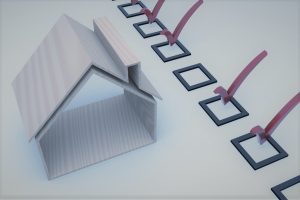Introduction
What is the procedure for the removal of trustees? Trustees must be elected at the first general meeting of the body corporate and then at each subsequent AGM. In exceptional circumstances it may become necessary for a trustee to be removed from office between AGMs.
What procedures does the legislation provide for the removal of trustees?
The PMRs provide various reasons and procedures for the trustee to cease holding office. PMR 6(4) provides that a trustee ceases to hold office if that trustee:
- (a) by written notice to the body corporate, resigns from office;
- (b) is declared by a court to be of unsound mind;
- (c) is or becomes insolvent and the insolvency results in the sequestration of that trustee’s estate;
- (d) is convicted, or has been convicted in the Republic or elsewhere, of theft, fraud, forgery, perjury or any other offence involving dishonesty;
- (e) is sentenced to imprisonment without the option of a fine;
- (f) is removed from an office of trust on account of misconduct in respect of fraud or the misappropriation of money;
- (g) is removed from office by ordinary resolution of a general meeting; provided the intention to vote on the proposed removal was specified in the notice convening the meeting;
- (h) is or becomes disqualified to hold office as a director of a company in terms of the Companies Act 71 of 2008; or
- (i) fails or refuses to pay the body corporate any amount due by that trustee after a court or adjudicator has given a judgment or order for payment of that amount.
Removal of a trustee at a general meeting of the body corporate
The procedure for removing a trustee from office between AGMs is by calling a general meeting of the body corporate. The intention to vote on the proposed removal must be specified in the notice convening the meeting. The resolution required to remove the trustee is an ordinary resolution of the body corporate.
PMR 17(4) sets out the ways in which an AGM can be called and states that the trustees may by resolution call a general meeting whenever they think fit. The trustees must call a general meeting if either:
- (a) members entitled to twenty-five per cent (25%) of the total quotas of all sections; or
- (b) the holder of mortgage bonds over not less than twenty-five per cent (25%) in number of all the primary sections, deliver to the body corporate a written and signed request for a SGM; provided that if the trustees fail to call a meeting thus requested within fourteen (14) days of delivery of the request, the members or bondholder concerned are entitled to call the meeting.
The members or a bondholder who request a meeting must include one or more motions or matters for discussion with their request and these motions or matters must be included, without amendment, in the agenda for the meeting. Specifically, the intention to vote on the proposed removal must be specified in the notice convening the meeting.
PMR 20(1) states that a motion at a general meeting:
- (a) does not need to be seconded; and
- (b) except for a special or unanimous resolution, must be adopted by resolution of the majority of the votes, calculated in value (known as the participation quota value), of the members present and voting.
Section 6(6) of the STSM Act states that when votes are calculated in value, each member’s vote is calculated either:
- (a) as the total of the quotas allocated to the sections registered in that member’s name; or
- (b) in accordance with a rule made in terms of section 10(2) of the STSM Act, whichever is applicable.
In terms of PMR 20(1)(b) ordinary resolutions are taken by a simple majority (calculated in value) of members present and voting at an AGM. The outcome of each vote, including the number of votes for and against the resolution, must be announced by the chairperson and recorded in the minutes of the meeting.

What can be done in circumstances where there is insufficient participation or support from the body corporate to remove a trustee?
If the body corporate wishes to have a trustee removed, and had insufficient participation or support from the body corporate at the general meeting to do so, it can make an application to the Community Schemes Ombudsman (the “CSOS”) as a measure of last resort. In terms of section 38 of the CSOS Act it is possible that any person may make an application to the CSOS if such person is a party to or affected materially by a dispute.
Any such person can therefore make an application to the CSOS to declare a dispute against the trustee. An application must be made in the prescribed manner and as may be required by practice directives; lodged with an ombud; and accompanied by the prescribed application fee. The application must include statements setting out:
- the relief sought by the applicant, which relief must be within the scope of one or more of the prayers for the relief contemplated in section 39 of the CSOS Act;
- the name and address of each person the applicant considers to be affected materially by the application; and
- the grounds on which the relief is sought.
Should the body corporate wish to have a trustee removed it can make an application to the Ombud in terms of section 39(4)(c) of the CSOS Act, which states that:
- “An application made in terms of section 38 must include one or more of the following orders: in respect of meetings – an order declaring that a resolution purportedly passed at a meeting of the executive committee, or at a general meeting of the association— (i) was void; or (ii) is invalid”
Editor Dr Carryn Durham













